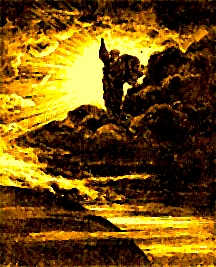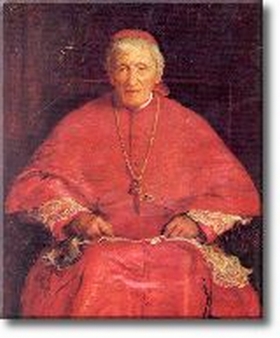 Wooden carving-1326 A.D.-Spain/Tilma- 1531 A.D.-Mexico
Wooden carving-1326 A.D.-Spain/Tilma- 1531 A.D.-Mexico
[adapted from Michael H. Brown’s The Last Secret]
In the hilly terrain southwest of Madrid, near that river called Guadalupe, a humble cowherd named Gil Cordero of Cáceres was searching for a lost cow when something very strange happened.
It was 1326. He’d been searching three days.
Thirsty and fatigued, Cordero headed for the sound of a mountain stream when he spotted the cow motionless on a mound of stones. Figuring the animal dead, Cordero pulled out his knife and prepared to take the animal’s hide, which he then could sell. As was the custom, he positioned himself, pressed in the knife, and made an incision in the form of a cross on the cow’s breast. That was when the cow suddenly moved. Not just moved but sprang up on its hooves as if restored to life. Cordero must have backed away. He was astonished and terrified.
The “dead” animal abruptly standing there!
At the same time Cordero spotted something –someone — coming from the woods. His astonishment was ready to surge to a higher magnitude.
It was no normal woman. There were no normal women out here. It was a female “of marvelous beauty” who spoke in a kind supernal voice. “Have no fear, for I am the Mother of God, by Whom the human race achieved redemption,” she told the speechless herdsman. “Go to your
home and tell the clergy and other people to come to this place where I appear to you and dig here, where they will find a statue.”
As was her custom she also asked that a chapel be built. Cordero had to have stood there staring. Whether the Virgin left in a flash of light or faded into the backdrop is not in the records.
Once he got hold of himself Cordero turned his attention back to the cow and as instructed headed into Cáceres. There he informed the clergy and anyone else within earshot that the Virgin had appeared out near the Guadalupe and she wanted them to dig for a lost relic. She wanted a chapel.
Looked upon as an uneducated and ignorant peasant, Cordero’s account was immediately mocked and the ridicule left him in a state between depression and desperation.
“Friends, do not dismiss these things!” protested the lonely cowherd. “If you will not believe me, then believe the mark the cow bears on her breast!”
Cordero insisted that the Virgin had promised to work many miracles and that people would come from many regions because of her wonders.
Seeing Cordero’s despair and knowing that many images had been hidden during the Arab occupation, which was about to end with a final expulsion, officials in Cáceres relented and paraded with the entire village to the precise spot where the animal had been found. There were knights, noblemen, and priests.
Pushing small boulders and removing stones, they dug into the earth until the ground collapsed into a small cave. Inside was just what Cordero promised, a statue along with an ancient bell. There was a document explaining its origin and also the relics of Saint Fulgentius and Saint Florentina.
The statue is what drew the attention. As the document explained, it was the long-lost image of Mary (believed to have been carved by St. Luke) that Pope Gregory the Great had given the bishop of Seville, the one that may have been paraded around Rome in 390, during an outbreak of plague. Moreover, the unstained, oriental wood seemed in perfect condition despite six centuries in the earth. Buried when the Moslems had first attacked, it was now coming out of seclusion at a time when the last Moslem holdouts were being expelled!
A hut was hastily built and a humble altar of stone was mounded. Soon that was replaced by a chapel, the bell melted and mixed with
other metal to form two bells which called the faithful to prayer and were rung during severe storms to preserve the crops. A subsequent
and enlarged shrine was attended by dignitaries from many parts and visited a century later by a devout explorer named Christopher Columbus, who would carry a replica of the statue with him on his voyages and would name an island in the West Indes “Guadalupe,” a name that would also spread to Mexico.
Submitted by Nancy W.

















